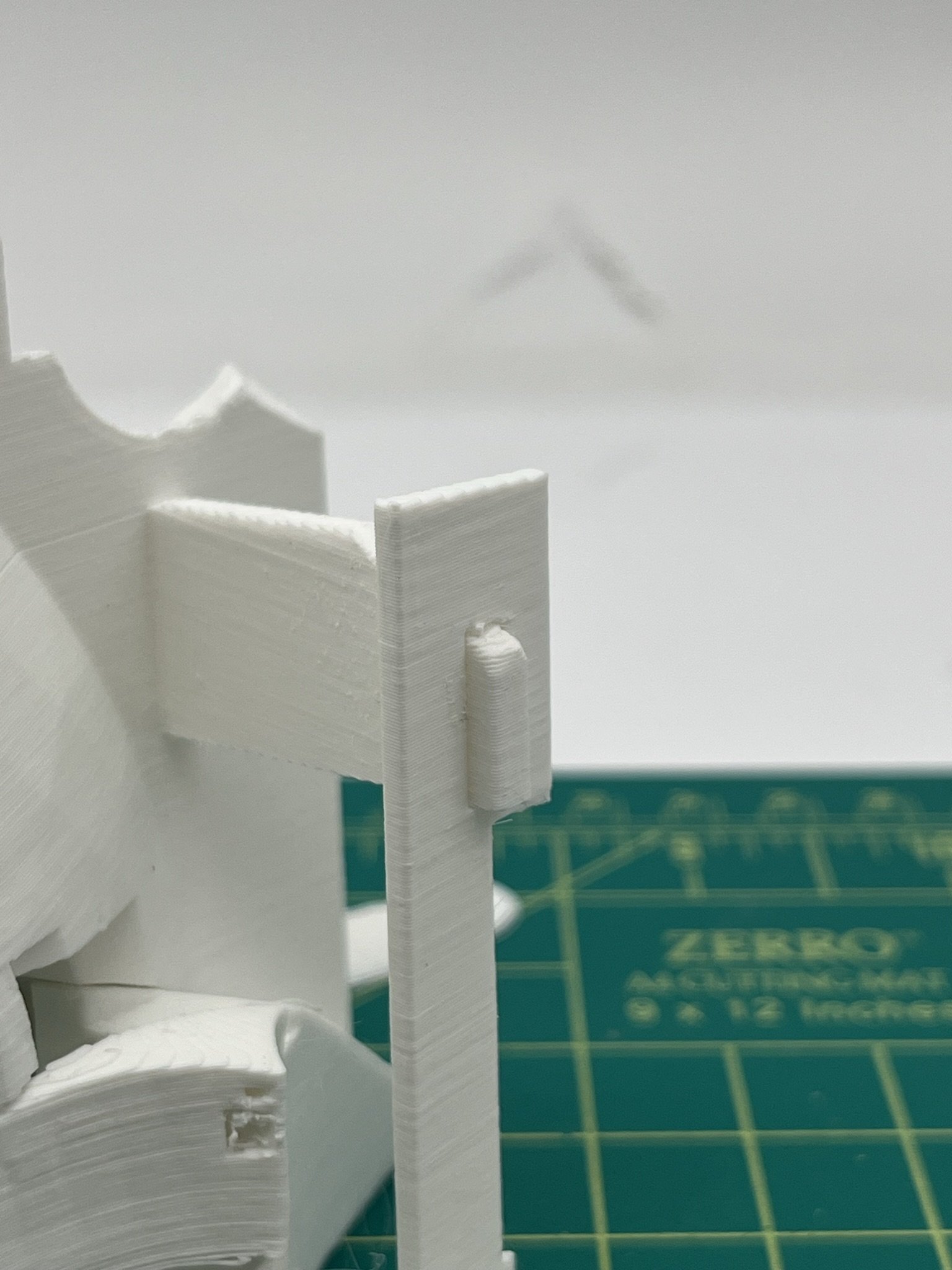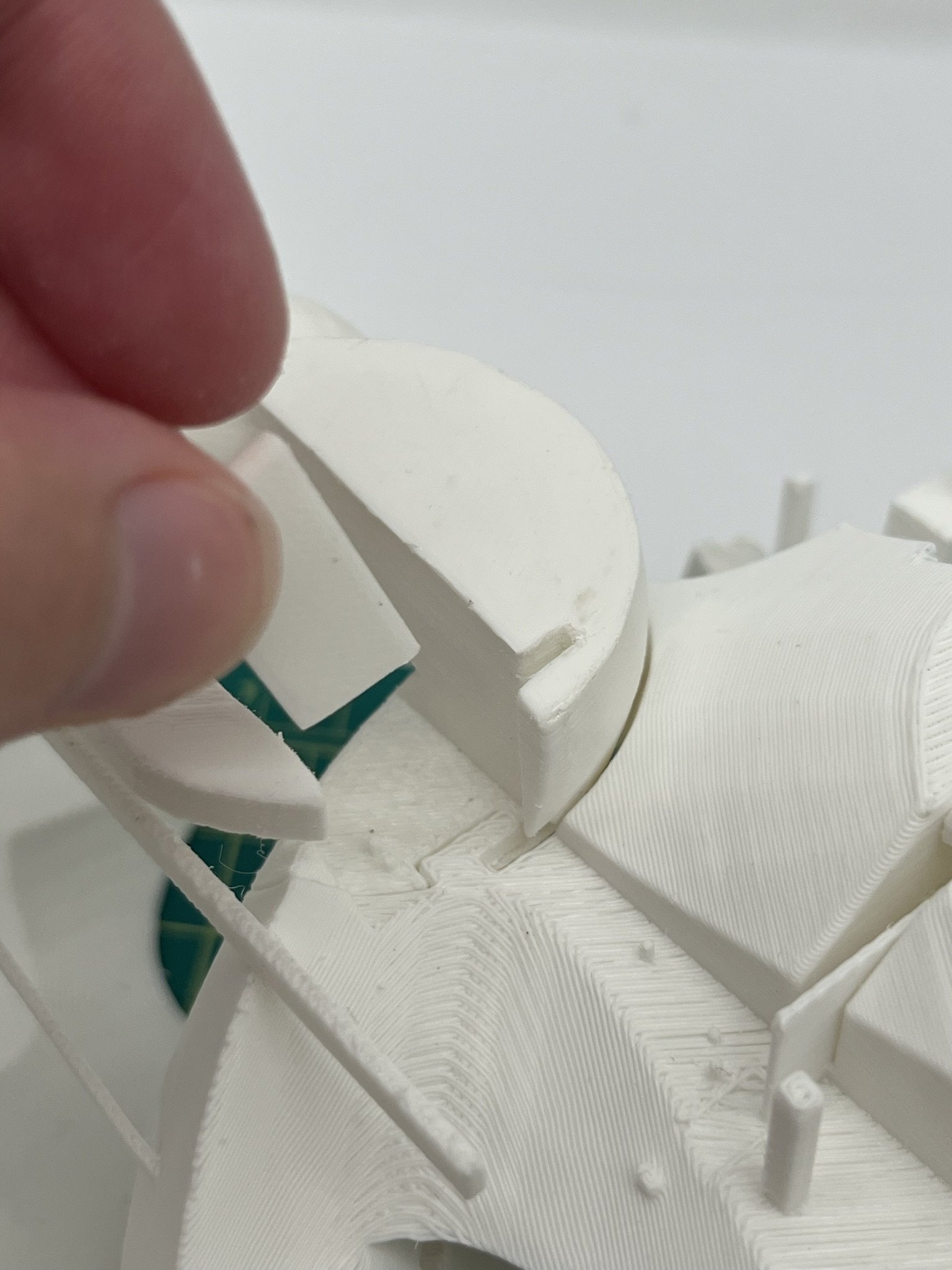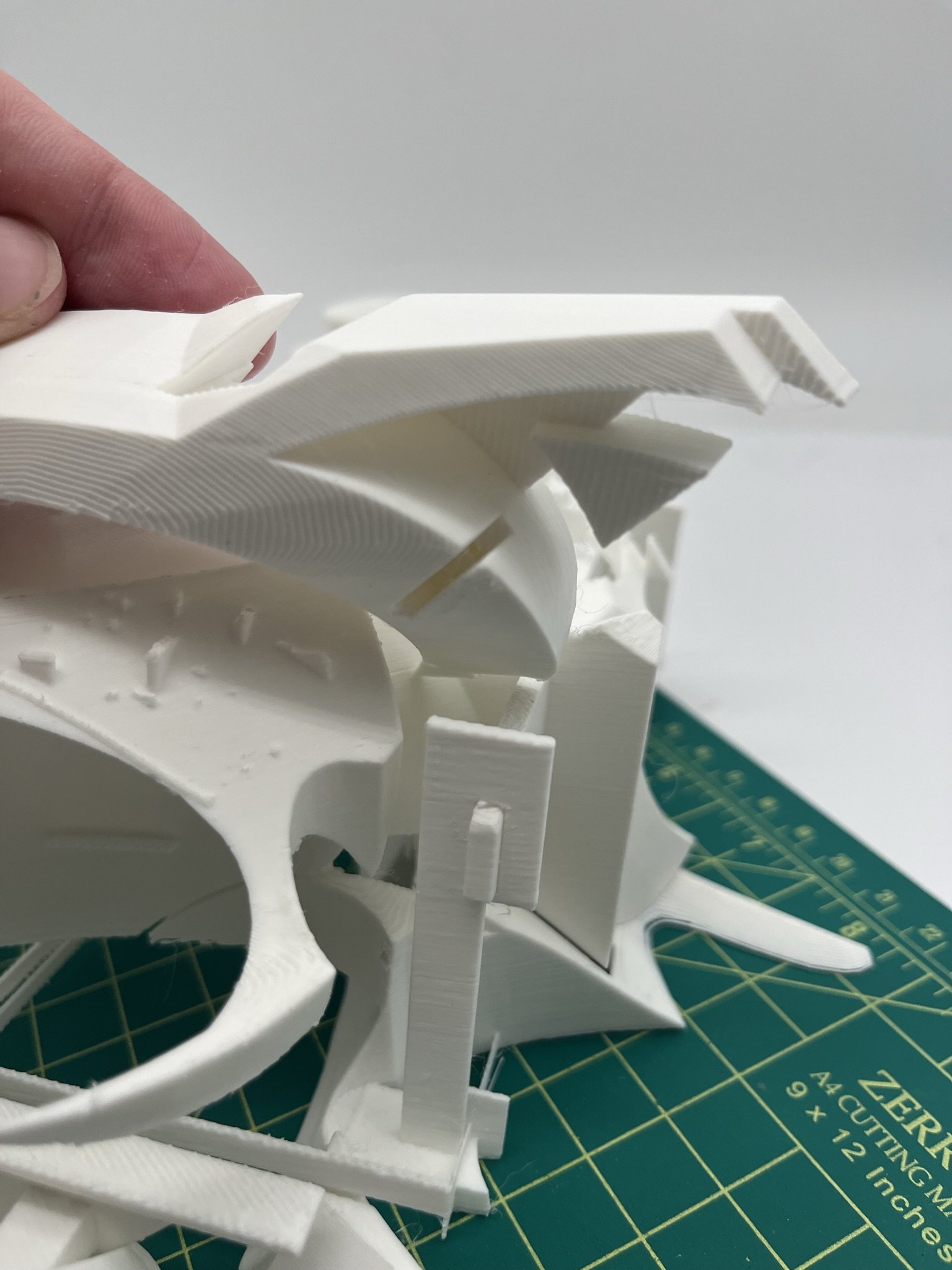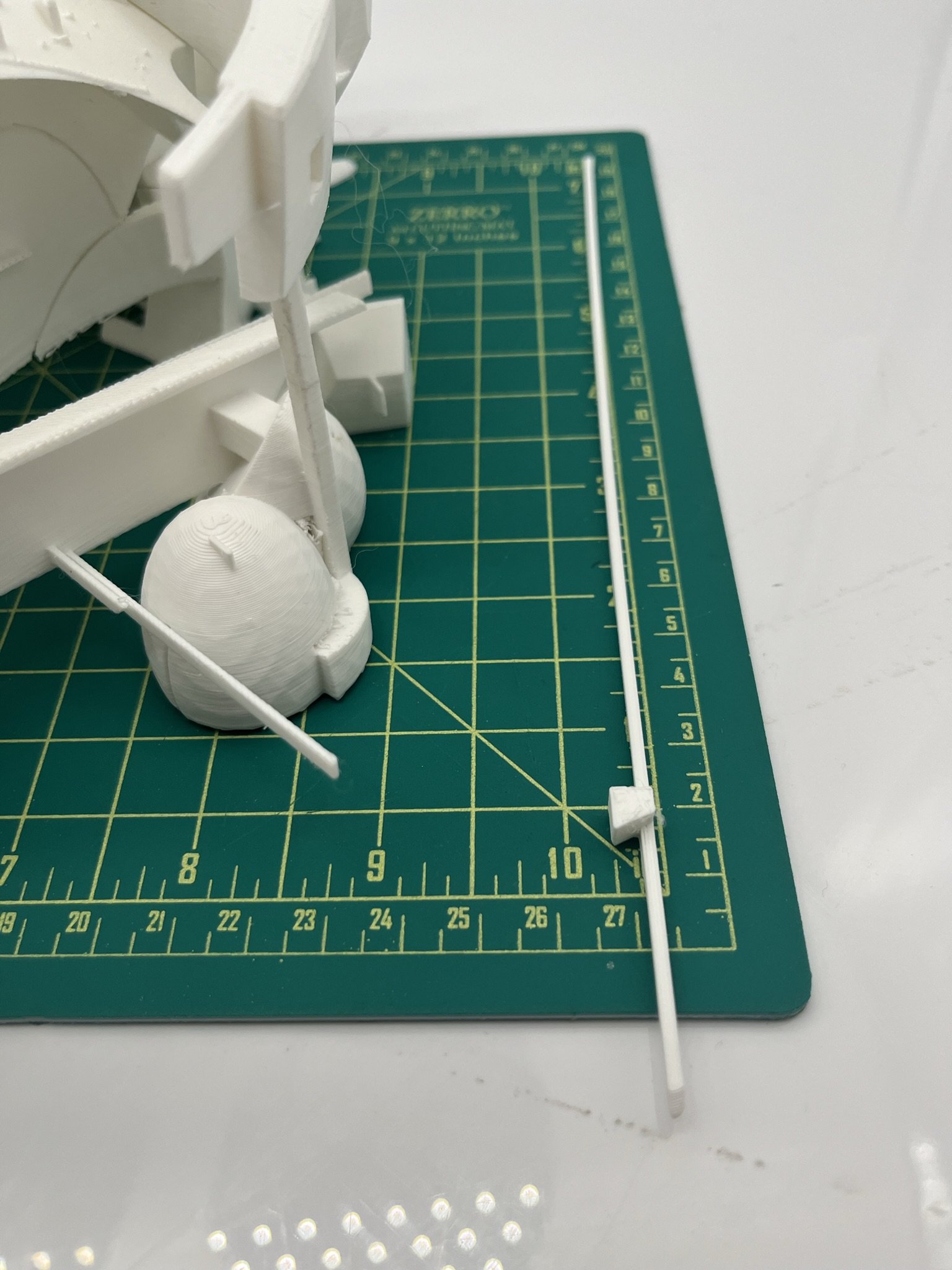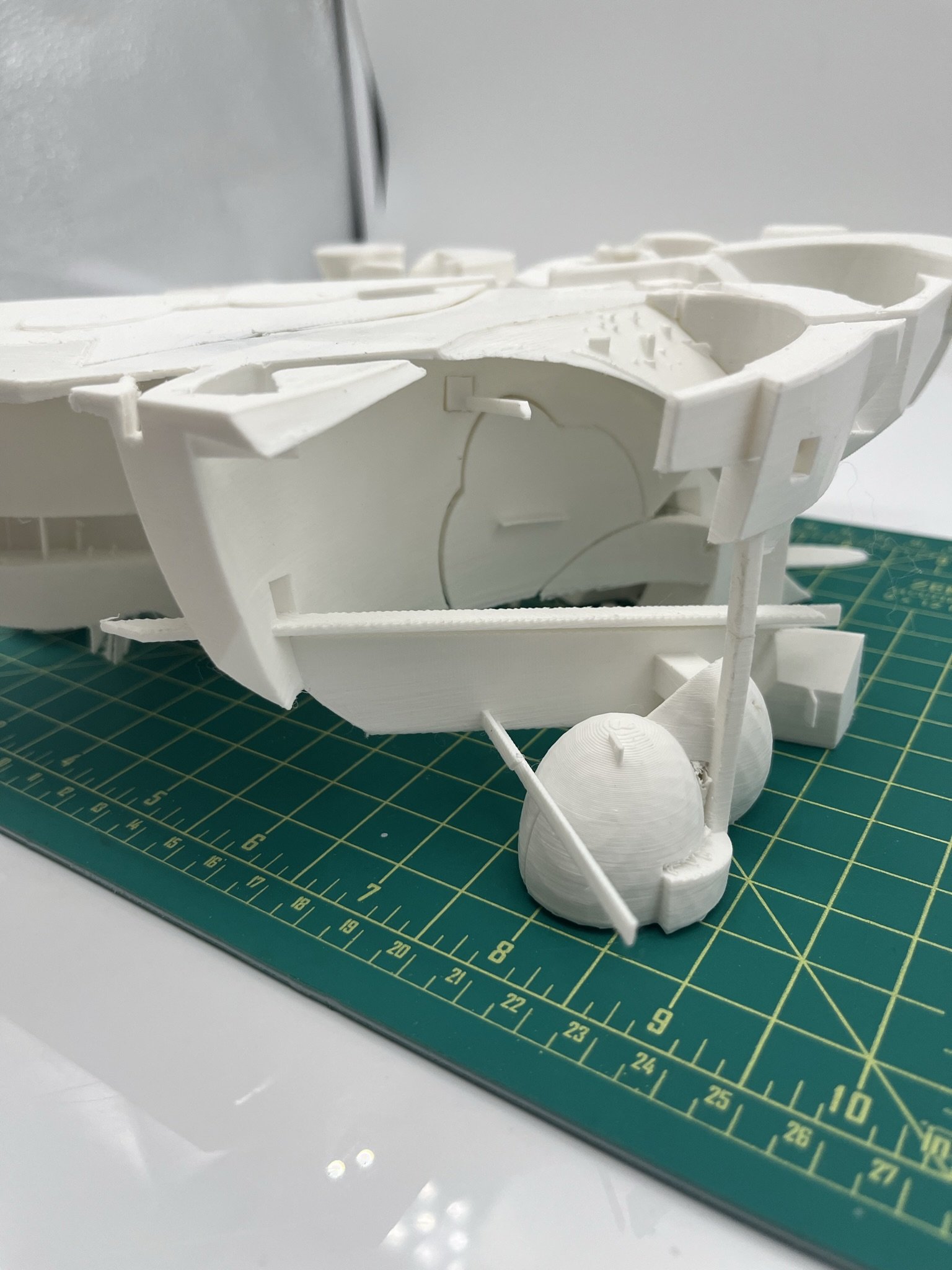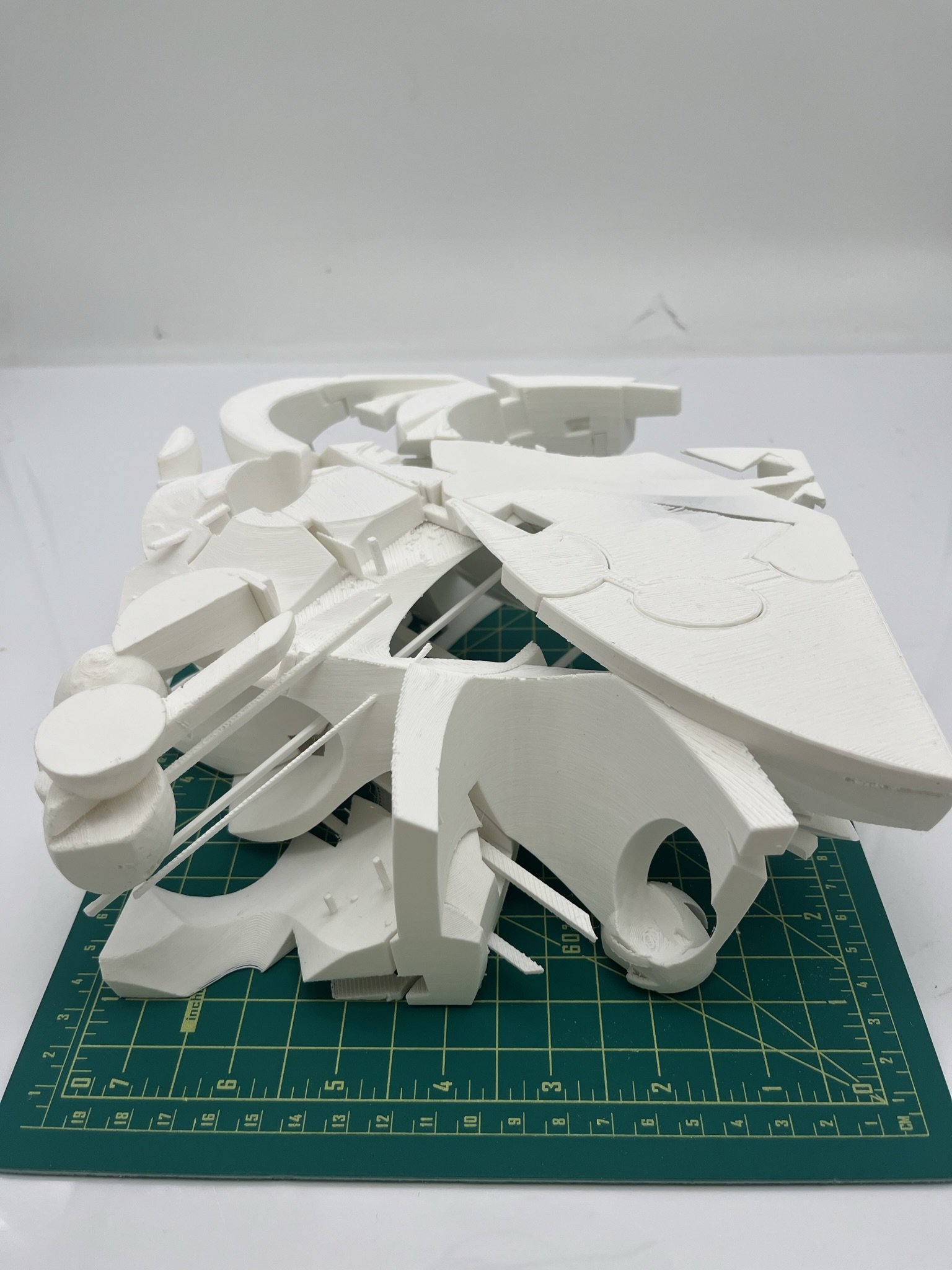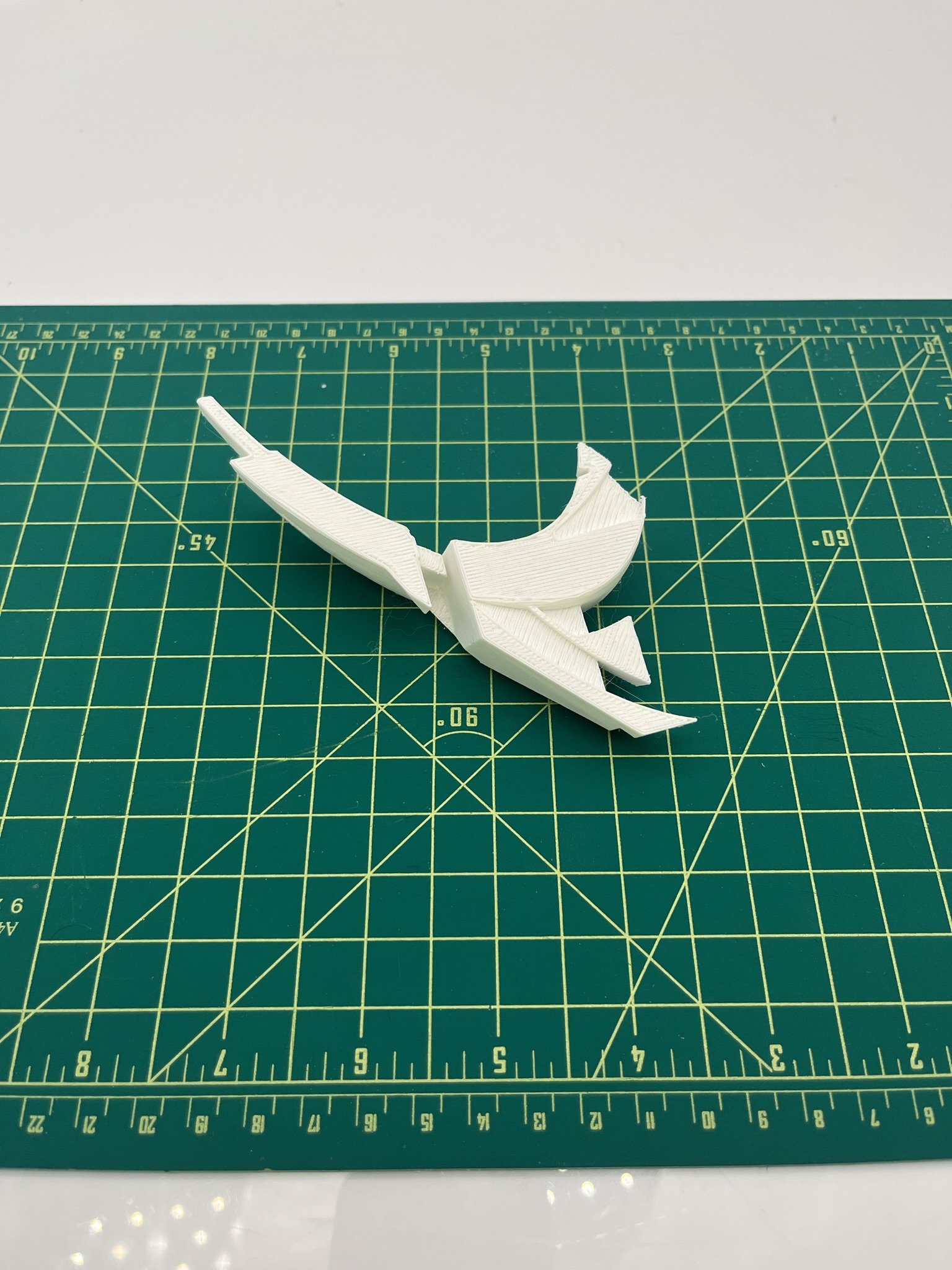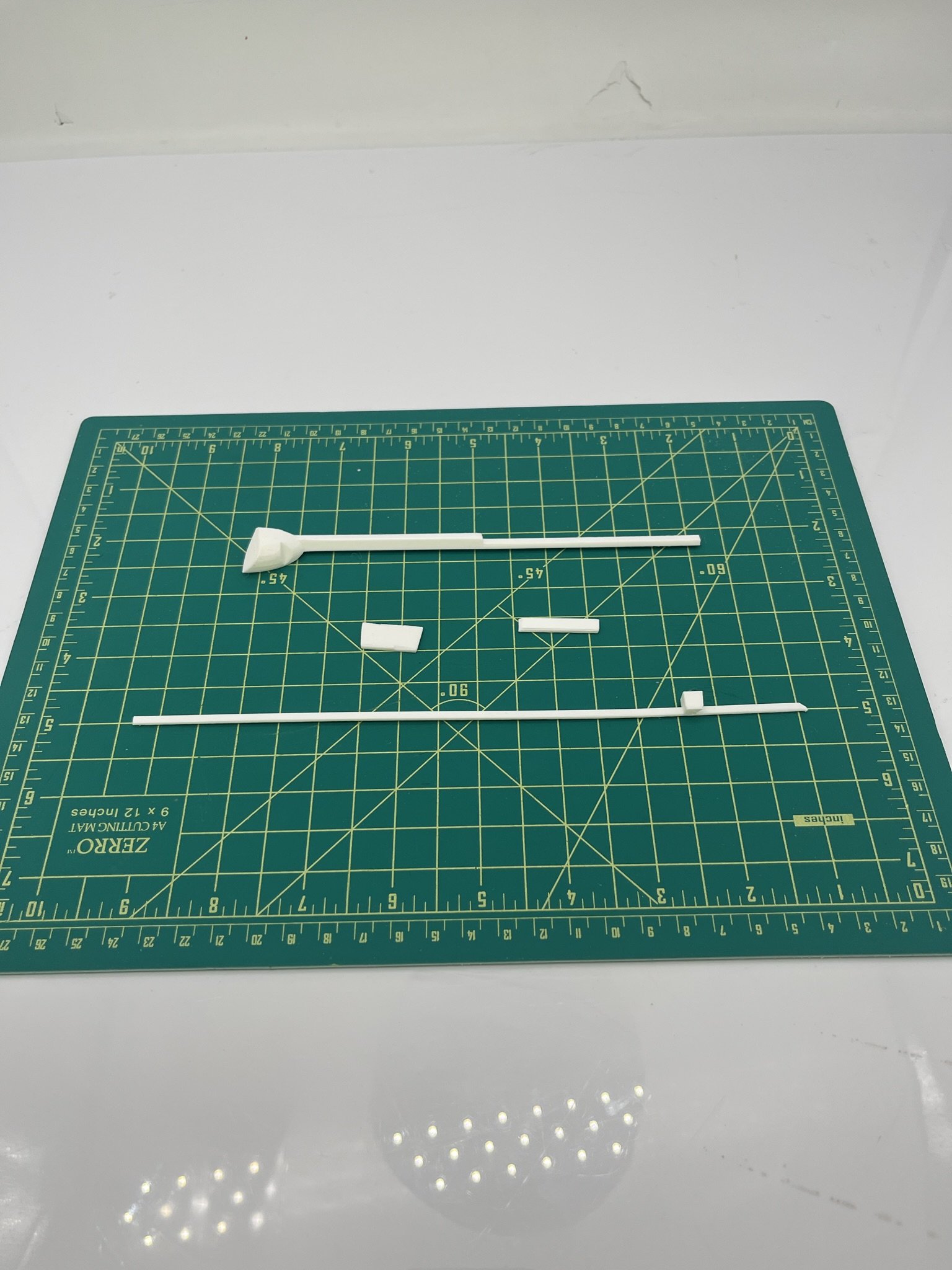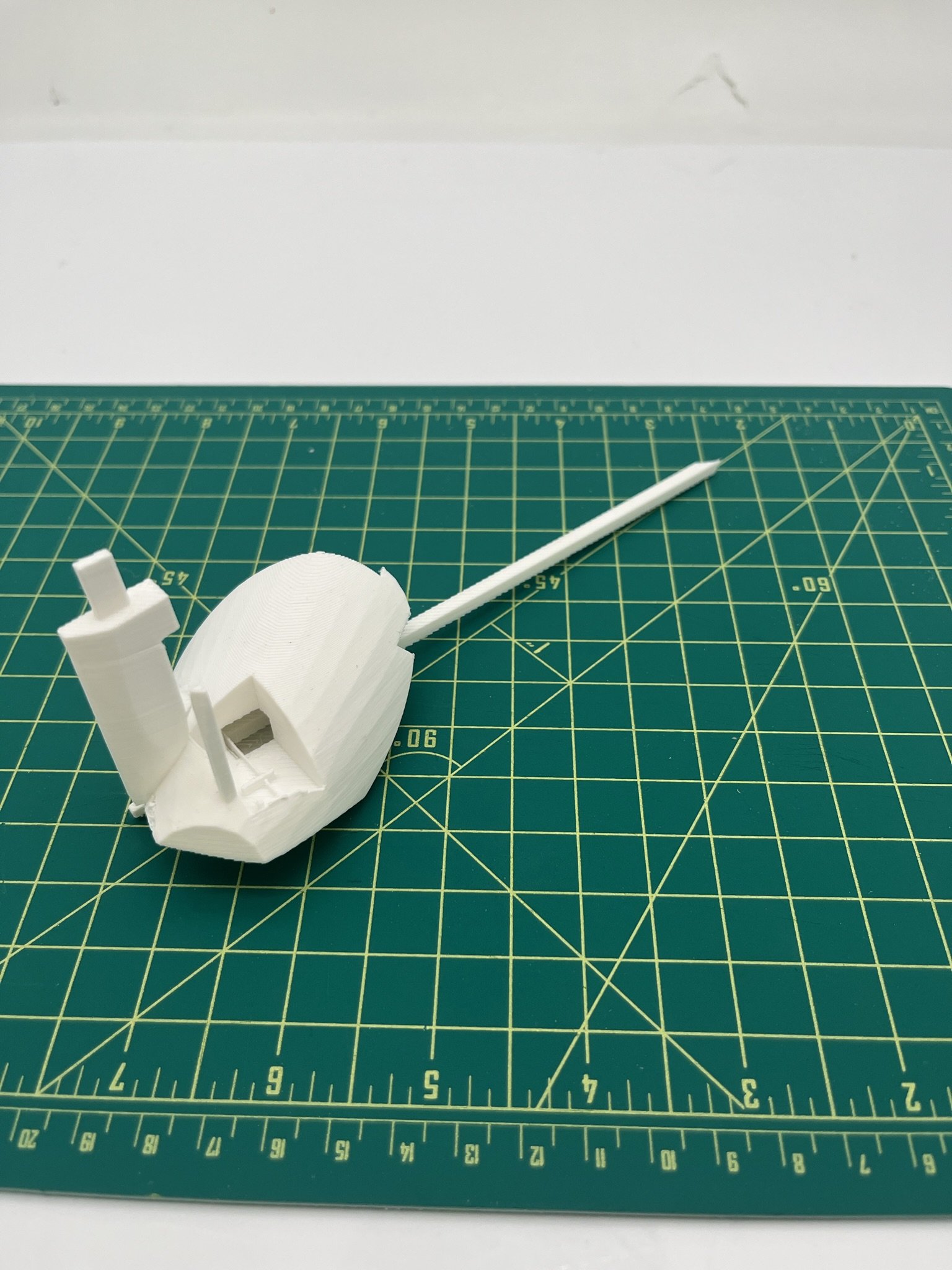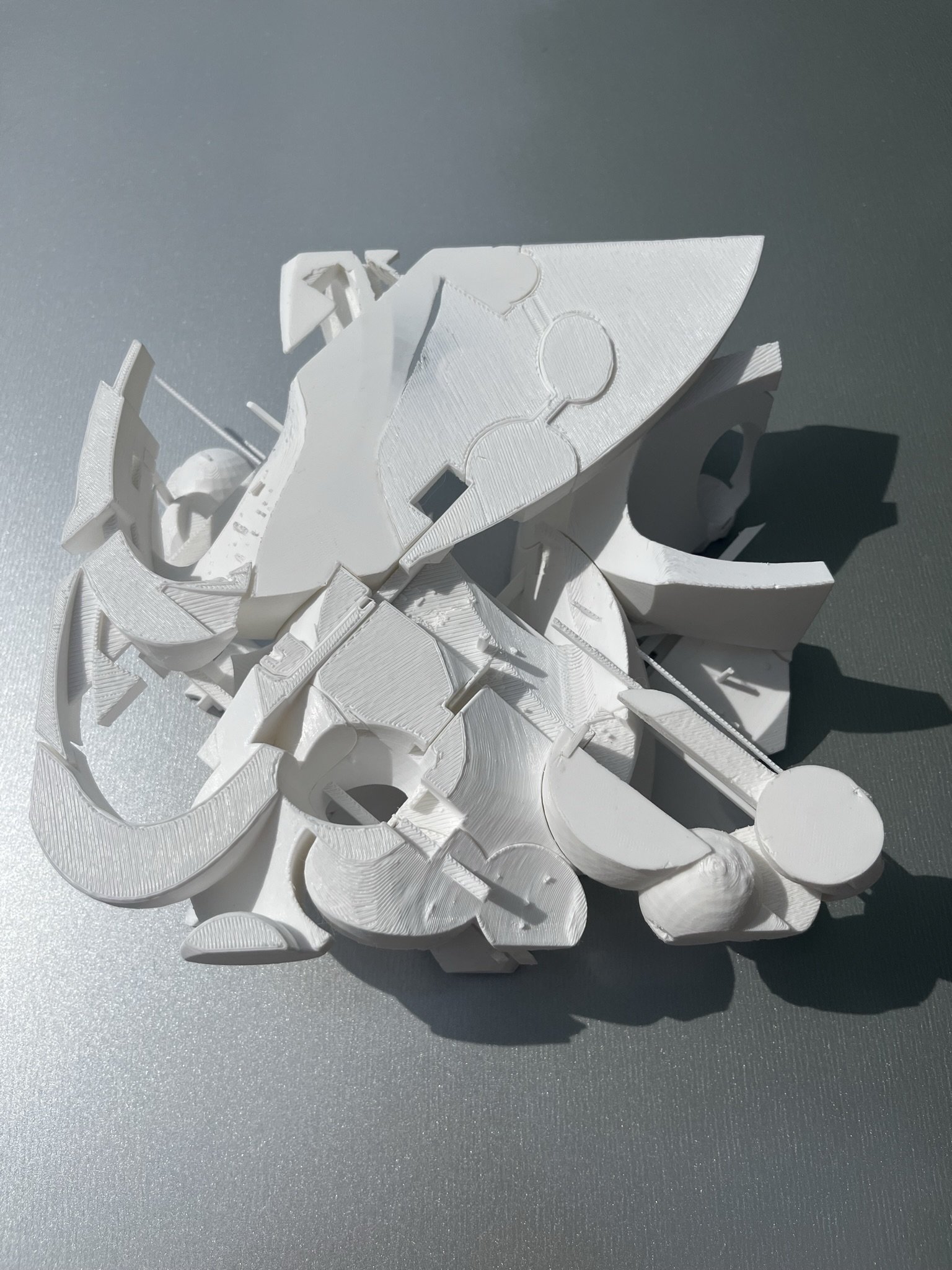Disruptive Continuity
Disruptive Continuity was a conceptual project about creating spatial relationships using three of the simpler tools in Rhino 3D: object, surface, and vector. Using a combination of Rhino and Grasshopper, I made a series of models, then choosing 36, then choosing 9, and then choosing 1 final model to move forward with. Once a final model was chosen, we were to go back and reemphasize the relationships we created, as well as making new relationships in a similar language by conducting local operations on the model.
I chose this specific model to move froward with because of the variety of scales I created using the objects. I also manipulated the surface in a way that blends the scales together with cuts. The objects also blend with each other through intersections and cuts. The model has large, open voids created by differencing with larger objects, as well as smaller, more detailed voids created by smaller objects and vectors. While the vectors appear to be placed randomly, they are carefully placed around the model to hide the more obvious clusters of vectors that appear. While I hoped to create patterns within the model, I did not want these patterns to be easily understandable. When an object or vector is disrupted or cut, it likely will appear somewhere else in the model. Sometimes as a continuation of that object or vector, or sometimes in a similar language as that object or vector. In its entirety, Disruptive Continuity is a controlled chaos, and while it may appear to be randomly generated, each choice was made thoughtfully to create a greater overall whole.
Once local operations were completed, we were than tasked with breaking the model into pieces for assemblage, creating another pattern in the model.
36 Final Selections
9 Final Selections
Final Selection
10 Pieces for Assemblage


